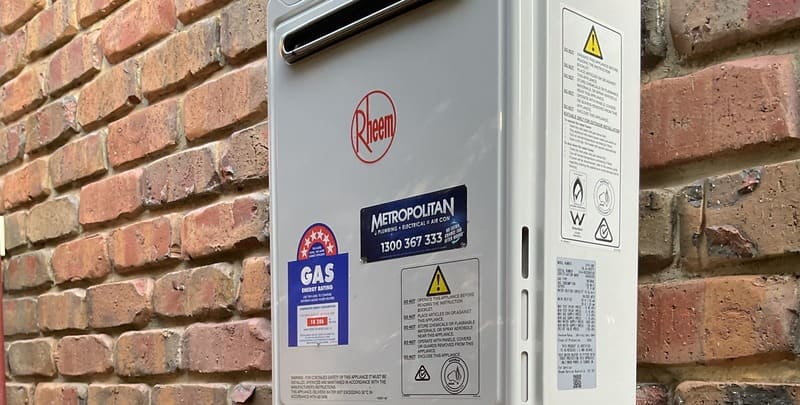Pressure Limiting Valves and Why You Need One
Ever dealt with leaky pipes, noisy plumbing, or frequent appliance issues at home? You might be surprised to learn that excessively high water pressure could be the hidden culprit behind these problems. That’s where pressure-limiting valves come into play—offering a simple yet effective solution.
Many homeowners overlook the damage that high water pressure can cause over time. Without proper regulation, it can lead to leaks, pipe bursts, and even premature failure of your hot water system and other appliances. A pressure-limiting valve (PLV) helps prevent all of this by controlling the incoming water pressure, ensuring it stays within safe limits for your home.
What Exactly Is a Pressure Limiting Valve?
A pressure-limiting valve is a key component in any modern plumbing system. Its main function is to reduce the water pressure entering your home to a level that's safe for your pipes, fixtures, and appliances. By doing so, it helps prevent unnecessary wear and tear and avoids costly repairs down the line.
These valves are typically installed near the main water supply line or water meter. They’re adjustable, allowing a licensed plumber to set the pressure according to your home’s specific needs. In Australia, the recommended maximum static pressure is 500 kilopascals, and PLVs help ensure you stay within that range.
Not only do pressure-limiting valves protect your plumbing, but they also help you comply with local building standards. This makes them an essential addition to both new and older homes.
Signs You Might Need a Pressure Limiting Valve
If you're experiencing issues like loud noises from your pipes, frequent leaks, or early failures of your hot water system or appliances, it could be a sign of high water pressure. Here are some common indicators that you may need a pressure-limiting valve:
- Unusual banging or rattling sounds in your pipes (commonly known as "water hammer").
- Frequent leaks or burst pipes, even if they seem small.
- Your hot water system or appliances are failing more often than expected.
- Increased maintenance or replacement of plumbing fixtures and meters.
- Water pressure that exceeds the recommended 500 kPa in your area.
If you notice any of these signs, it’s wise to consider installing a pressure-limiting valve. It can save you money on repairs and extend the life of your entire plumbing system.

How PLVs Protect Your Hot Water System and Appliances
High water pressure doesn’t just harm your pipes—it can also take a toll on your hot water system, dishwashers, washing machines, and other household appliances. Over time, this constant strain can lead to breakdowns and expensive repairs.
A pressure-limiting valve helps reduce the stress on these systems by maintaining a consistent and safe water pressure. This not only prevents leaks and bursts but also extends the lifespan of your appliances and plumbing. It’s a small investment that can make a big difference in the long run.
Why You Should Hire a Professional Plumber
While it might be tempting to try a DIY approach, installing a pressure-limiting valve isn’t something you should attempt without experience. A licensed plumber has the knowledge and tools to install the valve correctly and ensure it meets Australian safety standards.
They’ll assess your home’s water pressure and determine the best location for the valve, usually near the main water supply or water meter. Proper installation ensures the valve functions effectively and protects your entire plumbing system from damage.
Hiring a professional not only saves you from potential mistakes but also gives you peace of mind knowing your home is protected.
Common Myths About Pressure Limiting Valves
There are several myths surrounding pressure-limiting valves that can confuse homeowners. Let’s clear up a few misconceptions:
- Myth: PLVs reduce water flow. Fact: They only regulate pressure, not flow.
- Myth: All pressure valves are the same. Fact: There are different types, including adjustable and fixed models, to suit various needs.
- Myth: PLVs are only for old homes. Fact: Even new homes can suffer from high water pressure.
Understanding the truth about pressure-limiting valves can help you make better decisions for your home’s plumbing system.
Protect Your Home Today
Installing a pressure-limiting valve is a smart and cost-effective way to safeguard your home against the damaging effects of high water pressure. These devices help maintain safe pressure levels, protect your plumbing, and extend the life of your appliances.
With the added benefit of meeting Australian regulations, a pressure-limiting valve is a valuable addition to any home. Don’t wait until a problem arises—consult a professional plumber and get one installed today.
Please note: This information is for general guidance only. Regulations vary by state, so always consult local authorities or a qualified professional before making any plumbing changes. See our Terms & Conditions for more details.
Blind Flanges are manufactured without a bore and used to blank off the ends of piping, Valves and pressure vessel openings.
From the standpoint of internal pressure and bolt loading, blind flanges, particularly in the larger sizes, are the most highly stressed flange types.
However, most of these stresses are bending types near the center, and since there is no standard inside diameter, these flanges are suitable for higher pressure temperature applications.
Blind Flange,Blank Flange,Blind Plate,Pipe Blind Flange
Fuyuan Marine Accessories Co., Ltd , https://www.fymarineparts.com